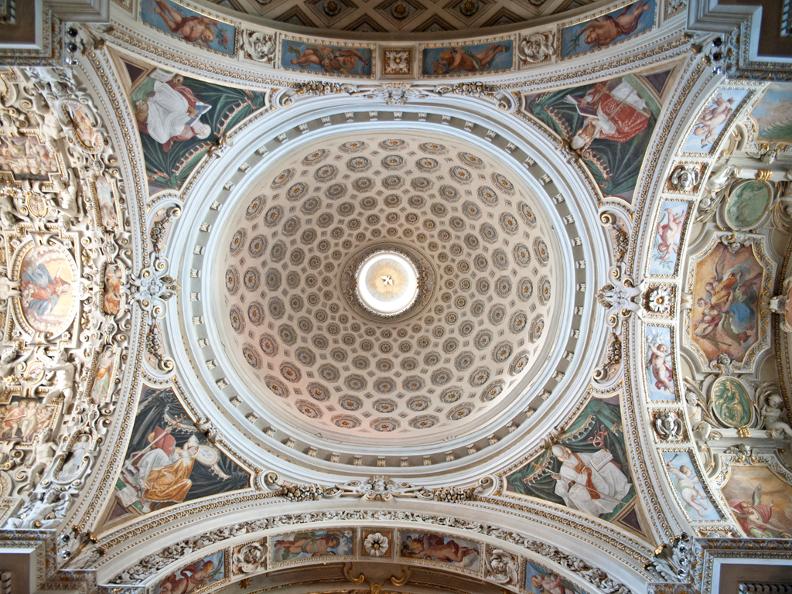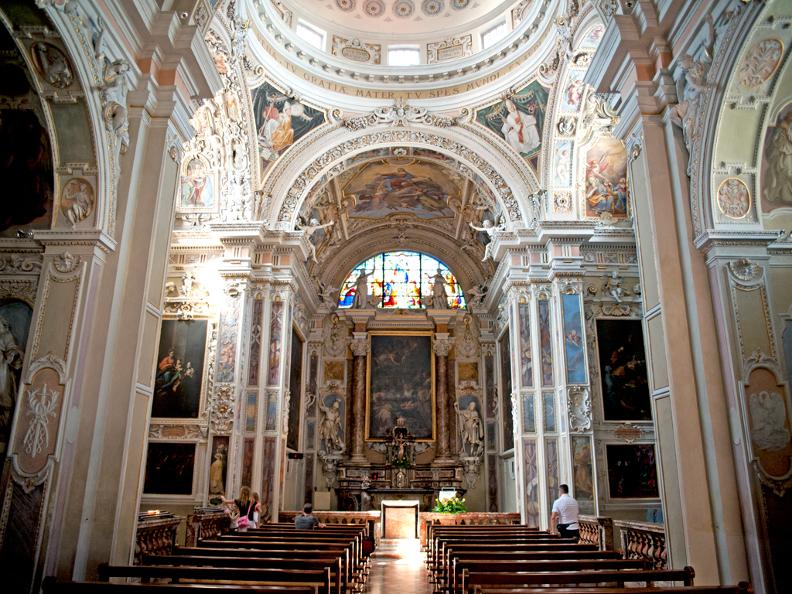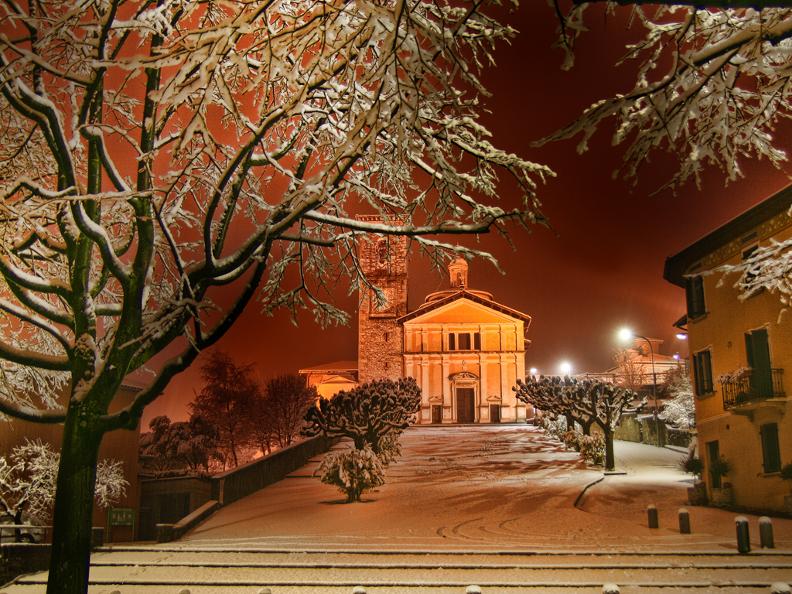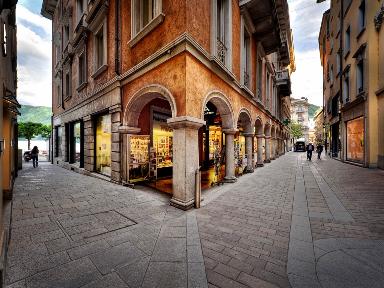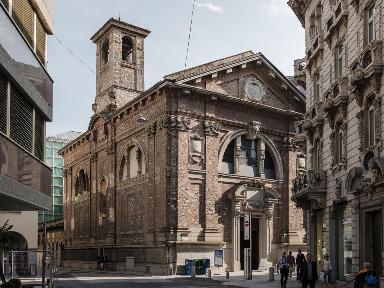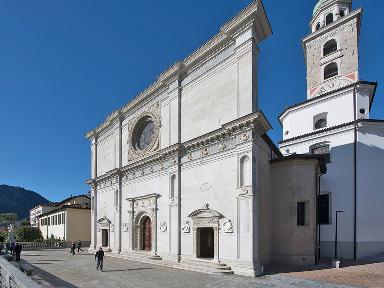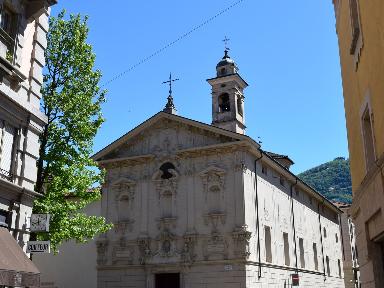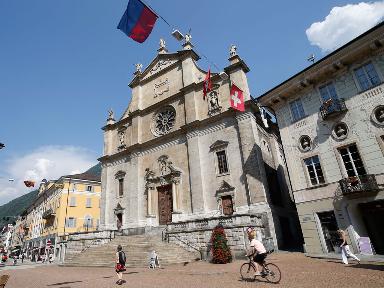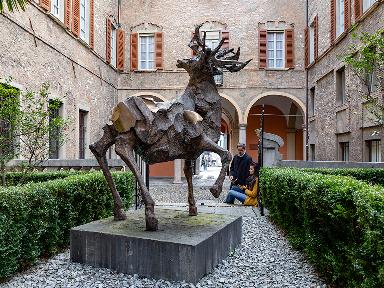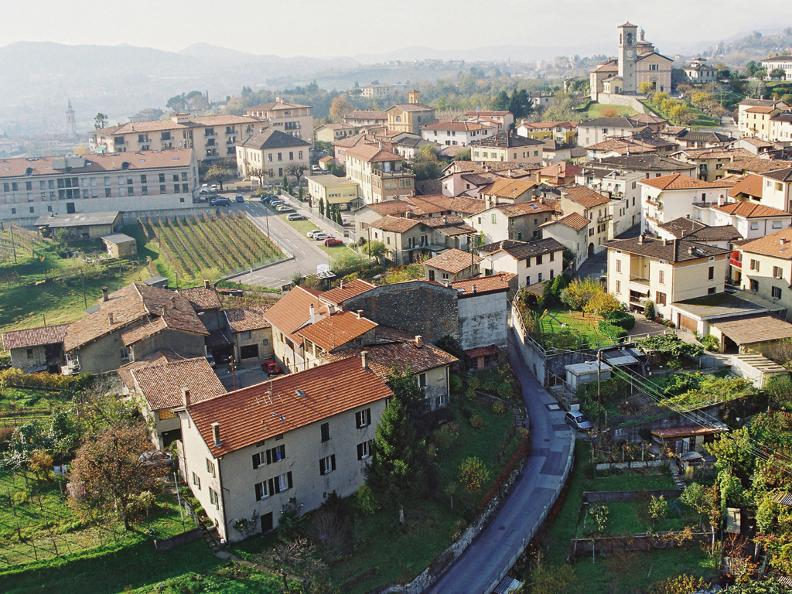
The church stands on a rise where there was once a castle, which was destroyed in the 16th century and of which only a chapel with a Marian fresco remains. Tradition has it that this image is linked to the miraculous healing of two young girls that gave rise to the church, dedicated to the Nativity of the Virgin but better known as Santa Maria dei Miracoli.
The building, built between 1595 and 1613, has a single nave with six side chapels and an ovoid drum dome. The robust bell tower is attached to the church.
The interior is richly decorated in Baroque style, largely by the Silva di Morbio family. In the chapel of the Virgin there is a venerated fresco (15th century) by an unknown author depicting the Madonna suckling the Child; it is surrounded by frescoes and stuccoes and medallions of the Mysteries of the Rosary (Isidoro Bianchi, 1620). The paintings include an Immaculate Conception by Francesco Torriani (1647) and a Virgin of the Rosary with Saints Dominic and Catherine by G. A. Petrini (1726), of great expressive intensity. In the chapel dedicated to St. Joseph there are two more works by Petrini, a fresco depicting St. Theresa in prayer and a canvas with the Death of Joseph. Above the 18th-century altar, an altarpiece by Filippo Abbiati from Milan with the Nativity of the Virgin (1680). On the sides, two large paintings with the Purification of Mary (Carlo Gaffuri, 1670-80) and the Presentation in the Temple (Paolo Recchi, 1679). The statues are by Francesco Silva; the medallions by his brother Agostino. Above the apse is a polychrome stained glass window from the beginning of the 20th century.
In the course of restoration (1999-2001, architect Carlo Rizzi), the presbytery area was also renovated and a new altar in Arzo and Peccia marble was placed.
Connected to the church is the Rosary Chapel (1718), which housed the rich collection of ex-votos (a new exhibition space is in preparation).
Accessibility Services
This cultural/tourist point of interest took part in the digital data mapping project on accessibility by Pro Infirmis. The project was carried out with the collaboration and support of Ticino Turismo, the four regional tourist organisations and the Department of Education, Culture and Sport.
All information on the accessibility of the partner in question can be found on the following page.
